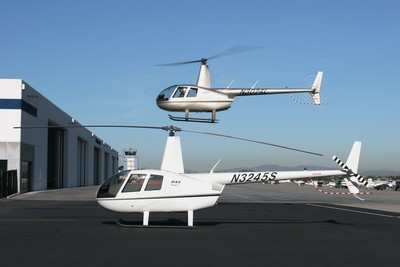Tue, Sep 04, 2012
New Hampshire Company Granted EASA STC For Auto Gas In Robinson Model R44
The European Aviation Safety Agency (EASA) has granted an STC to New Hampshire-based JTI Air Holdings allowing the operation of Robinson Model R44 helicopters using automotive gasoline for fuel. The company sells certificates that allow pilots in the United States and other countries to fly helicopters using cost-saving automotive gas.

The company says that using automotive gasoline as an alternative helicopter fuel is not only better for the environment, but also more cost efficient, says company executive Howard Fuller. Leaded aviation fuel is being phased out worldwide due to environmental concerns. In the U.S., automotive gasoline that meets ASTM specification D8414 has been approved for helicopter use for several years under STCs that were jointly developed by Fuller and U.S.-based Peterson Aviation. In Europe, aircraft operators are feeling the pressure of leaded fuel being discontinued. Operators of the popular Robinson R22 and R44 piston-engine powered helicopters, many of whom fly in remote areas, are scrambling to find alternative helicopter fuels.
Savings when flying with auto gas are expected to be between $15 to $25 per hour when compared to either 100LL aviation fuel or its replacement, 91UL. Similar operations for the R22 helicopter have been “grandfathered” under British CAA Airworthiness Approval Note No. 27743, Issue 2.
FAA test results show the R44 used approximately 3/4 gallon less fuel per hour, and hovered on about 1” less manifold pressure than when operated on 100LL aviation gas.
EASA, in accordance with the recently signed EU-USA Bilateral Airworthiness Safety Agreement, issued STC No. 10041028 to Fuller on Aug. 16. The certificate permits the operation of European R44 helicopters using 91-octane automotive gasoline. In Europe, JTI's automotive gasoline supplemental type certificates (STCs) are sold by company representative Joop van Weele of Holland.
(R44 file photo)
More News
Known Traffic With respect to ATC clearances, means aircraft whose altitude, position, and intentions are known to ATC.>[...]
Aero Linx: Aviation Suppliers Association (ASA) Established February 25, 1993, the Aviation Suppliers Association (ASA), based in Washington, D.C., is a not-for-profit association,>[...]
Abeam An aircraft is “abeam” a fix, point, or object when that fix, point, or object is approximately 90 degrees to the right or left of the aircraft track. Abeam indic>[...]
Aero Linx: The Air Charter Safety Alliance The group, called the Air Charter Safety Alliance, will raise awareness of illegal charter flights among potential customers, charter bro>[...]
“For months, ALPA has been sounding the alarm on the ongoing efforts by some aircraft manufacturers to remove pilots from the flight deck and replace them with automation. To>[...]
 ANN's Daily Aero-Term (06.10.24): Known Traffic
ANN's Daily Aero-Term (06.10.24): Known Traffic ANN's Daily Aero-Linx (06.10.24)
ANN's Daily Aero-Linx (06.10.24) ANN's Daily Aero-Term (06.11.24): Abeam
ANN's Daily Aero-Term (06.11.24): Abeam ANN's Daily Aero-Linx (06.11.24)
ANN's Daily Aero-Linx (06.11.24) Aero-News: Quote of the Day (06.11.24)
Aero-News: Quote of the Day (06.11.24)



